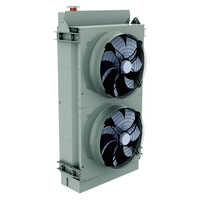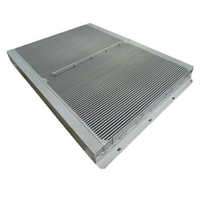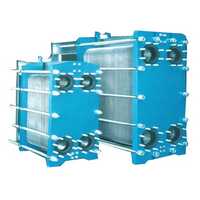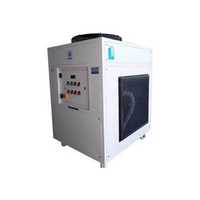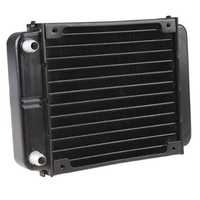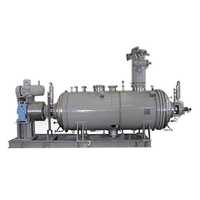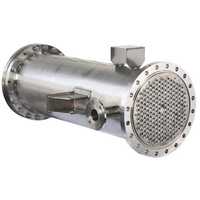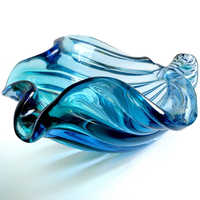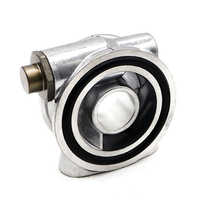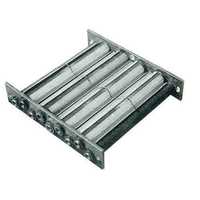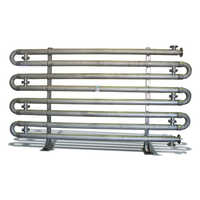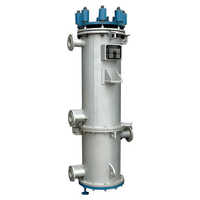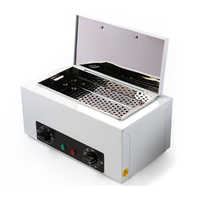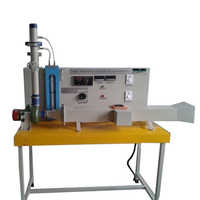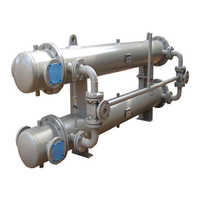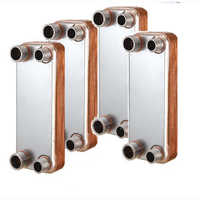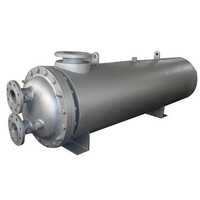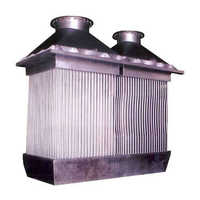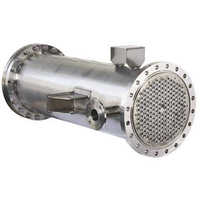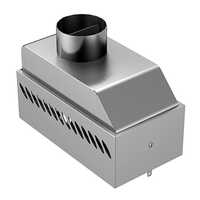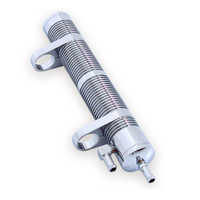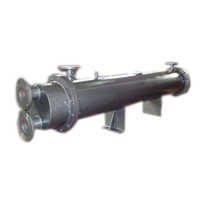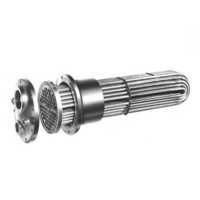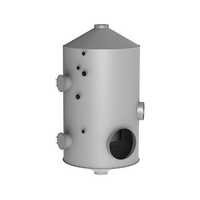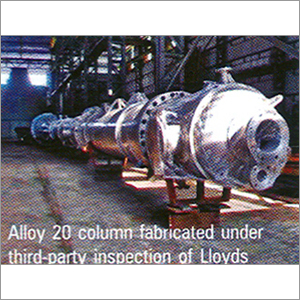Heat Exchangers
(4992 products)
Related Categories
Abrasives
Acoustic Products
Acrylic Sheets
Air Blowers
Air Compressors & Air Separation Plants
Air Cooler
Air Dryers
Air Receiver
Air Valves
Aluminum Castings
Anchors
Anti Vibration Mounts
Ball & Roller Bearings
Ball Valves
Ballast Making Machines
Bearing Parts & Components
Bearings
Bellows & Expansion Joints
Belt Pulleys
Boilers, Components & Spares
Bolts
Bright Bars
Bristles
Burners/Industrial Burners & Incinerators
Bushings & Bushing Parts
Butterfly Valves
CNC Machined Components
Cable Pulleys
Capital Goods
Carbon & Graphite Products
Castor Wheels
Centrifugal Pumps
Centrifuges
Ceramics
Chains & Chain Link Fence Fittings
Cleaning Equipment
Clips, Clamps
Coils
Combustion Equipment
Compression Springs
Compressors & Allied Equipment
Control Valves
Conveyor & Conveyor/Industrial Belts
Cooling Tower & Chilling Plants
Coupling
Cranes
Cryogenic Equipment
Cutting Tools, Broaches & Cutters
Departmental Shelving
Diaphragm Valves
Die Castings
Dies & Moulds
Dies,Jigs,Fixtures
Diesel Engine & Electric Locomotive Spares
Draught Fan
EOT Cranes
Electric Hoists
Electric Motors & Engines
Electroplating Chemicals & Equipment
Energy Management System
Engine Valves
Engineering Goods & Equipment
Engineering Plastics
Engraving Equipment
Extruded Profiles
Fasteners
Fiberglass Products
Filter Cartridges & Media
Filter Cloth, Filter Industrial
Filters-Air, Gas, Liquid
Filtration & Sedimentation Units
Flat Metal Processing Equipment
Float Valves
Fork Lift Truck Parts
Fork Lift Trucks
Forklifts
Foundry Raw Material & Equipment
Furnace Manufacturers
Galvanized Fasteners
Gantry Cranes
Gaskets
Gate Valves
Gauges & Gauge Glasses
Gear Boxes, Reduction Gears & Gear Cutting
Girder Cranes
Glass & Glass Products
Glass Cutting Tools/Glass Cutters
Globe Valves
Goliath Cranes
Grating
Hand & Allied Tools
Hand Pump
Hardware & Tools
Heat Exchangers
Heating Elements
Hex Bolts
Hex Nuts
Hooks & Mounts
Hoses
Hot Air Oven
Humidification & Ventilation Equipment
Hydraulic Hoses & Flexible Metal
Hydraulic Press
Hydraulic Press Brakes
Hydraulic Products & Equipment
Hydraulic Valves
Induction Heating Equipment
Industrial Automation
Industrial Brakes
Industrial Brushes
Industrial Clothing
Industrial Clutches
Industrial Cylinders
Industrial Dryers
Industrial Evaporators
Industrial Knives
Industrial Nets
Industrial Ovens
Industrial Rollers
Industrial Supplies Stocks
Industrial Supplies-General
Industrial Tape
Industrial Tools
Industrial Valves
Industrial Vibrator
Inspection Equipment
Instrumentation
Internal Combustion Engine
Jib Cranes
Laboratory Furniture
Laboratory Glassware & Equipment
Laundry Equipment
Lined Valves
Machine Tools Accessories
Marking Systems
Material Handling Equipment
Measuring Tools & Equipment
Mechanical Seals
Metallised Capacitor Films
Mining Equipment
Mining, Exploration & Drilling Machinery
Model Making Materials
Motor Couplings
Moulded Components
Moulds
Needle Valves
Needles
Nuts
Oil Seals
Outdoor Cooling Systems
Overhead Cranes
PVC Hoses
PVC Products
Paint Brushes
Painting Equipments & Maintenance
Perforated Sheets
Plastic Processing Machinery Parts
Plastic Valves
Plastic Welding Equipment
Plate Valves
Plug Valves
Pneumatic Products & Tools
Pneumatic Valves
Polish & Polishing Material/Machinery
Power Press
Precision Brass Components
Pressed Components
Pressure Gauges
Pressure Vessels
Pulleys
Pulverizers
Pump Spares Parts
Pumps & Pumping Equipment
Radiators
Refrigeration & Equipment
Rope Pulleys
Rope,Twines & Webbings
Ropes
Rotary Valves
Rubber & Rubber Products
Rubber Gaskets
Rubber Roller
Rubber Seals
Rubber Transmission Belts
Screws
Seals
Sensors & Transducers
Shaft Couplings
Shafts & Shaft Collars
Sheet Metal Components & Parts
Solenoid Valves
Springs
Stainless Steel Bolts
Stainless Steel Fasteners
Stainless Steel Nuts
Stainless Steel Valves
Storage Systems
Storage Tanks
Submersible Pumps
Surface Finishing Equipment
Synthetic Industrial Diamonds
Thermostatic Bimetals & Thermostats
Trolleys & Carts
Tungsten Carbide
Ultrasonic Equipment
V-Belts
Vacuum Equipment & System
Valves
Valves Fittings
Vibrating Screen
Washers
Water Coolers
Weighbridge
Welding & Soldering Supplies
Welding Electrodes
Welding Equipment
Winches
Wire Drawing Dies
Wire Rope Hoists
Wire Ropes
Explore More Categories
Heat Exchanger For Paddy Dryer Heater Power Source: Electricity
Price: 80000 INR (Approx.)/Unit
MOQ- 1 Unit/Units
17 Years
Mark Engineers
Indian Inquiries Only
Product Showcase
White Fluoropolymer Heat Exchanger
MOQ - 10 Unit/Units
Usage - industrial
Product Type - Fluoropolymer Heat Exchanger
Color - White
17 Years
Business Type: Manufacturer | Supplier
HI-TECH APPLICATOR
Heat Exchangers
Price: 200000.00 INR (Approx.)/Unit
MOQ - 1 Unit/Units
22 Years
Business Type: Manufacturer | Supplier
DIPESH ENGINEERING WORKS
Tube Heat Exchanger Heatless Air Dryer
Price: 5000 INR (Approx.)/Unit
MOQ - 1 Unit/Units
Temperature - High-temperature
Condition - New
Structure - tube Heat Exchanger
14 Years
Business Type: Manufacturer
UNIQUE AIR PRODUCTS
Indian Inquiries Only
Silver Thermic Fluid Heat Exchanger For Sago Industries
Price: 60000 INR (Approx.)/Piece
MOQ - 1 Piece/Pieces
Size - Different Sizes Available
Usage - Industrial
Color - silver
12 Years
Business Type: Manufacturer | Exporter
THERMAL ENERGY SOLUTIONS
Heat Exchanger
Price: 100000 INR (Approx.)/Unit
MOQ - 1 Unit/Units
21 Years
Business Type: Manufacturer | Exporter
SUNRISE PROCESS EQUIPMENTS PRIVATE LIMITED
Gray Scraped Surface Heat Exchanger
MOQ - 1 Unit/Units
Color - Gray
Usage - Industrial
Product Type - Scraped Surface Heat Exchanger
2 Years
Business Type: Manufacturer | Supplier
Sahyadri Engineering Corporation
Indian Inquiries Only
Gas Boiler Heat Exchanger Thickness: 1-200 Millimeter (Mm)
Price: 1000000 INR (Approx.)/, Unit
MOQ - 1 , Unit/Units
Thickness - 1-200 Millimeter (mm)
Product Type - Gas Boiler Heat Exchanger
Width - 10-50 Meter (m)
15 Years
Business Type: Manufacturer | Exporter
Ketav Consultant
Sliver Heat Exchanger
Price: 150000 INR (Approx.)/Unit
MOQ - 1 Unit/Units
Usage - industrial
Color - Sliver
Product Type - Heat Exchanger
13 Years
Business Type: Manufacturer | Exporter
PRATHAM ENGINEERING
Industrial Plate Heat Exchanger
Price: 100000.00 - 300000.00 INR (Approx.)/Unit
MOQ - 1 Unit/Units
Usage - Industrial
Product Type - Plate Heat Exchanger
Condition - New
11 Years
Business Type: Manufacturer | Exporter
VED ENGINEERING
Grey Heat Exchangers
Price: 1000000 INR (Approx.)/Unit
MOQ - 1 Unit/Units
Product Type - Heat Exchangers
Usage - Industrial
Color - Grey
2 Years
Business Type: Manufacturer | Exporter
PRAGYA PRECISION EQUIPMENT PRIVATE LIMITED
Shell And Tube Heat Exchanger Usage: Pharmaceutical Industry
Price: 200000.00 - 300000.00 INR (Approx.)/Unit
MOQ - 1 Unit/Units
Temperature - Low temperature, Medium-Temperature Celsius (oC)
Usage - Pharmaceutical industry
Condition - New
8 Years
Business Type: Manufacturer | Supplier
AIRRO ENGINEERING CO.
Stainless Steel Heat Exchangers
Price: 250000 INR (Approx.)/Unit
MOQ - 1 Unit/Units
16 Years
Business Type: Manufacturer | Supplier
ASCENT MACHINERIES & ENGG. SERVICES
Heat Exchanger
Price: 15000.00 - 50000.00 INR (Approx.)/Piece
MOQ - 1 Piece/Pieces
8 Years
Business Type: Manufacturer | Distributor
SWASTIK ENTERPRISE
Silver Heat Exchanger
MOQ - 1 Unit/Units
Product Type - Heat Exchanger
Usage - Industrial
Color - Silver
15 Years
Business Type: Manufacturer | Distributor
PRIME ADVANCE POLISHING SYSTEM PVT. LTD.
Half White Fpc Heat Exchanger System
Price: 60000 INR (Approx.)/Piece
MOQ - 5 Piece/Pieces
Color - Half White
Usage - Industrial And Commercial
Type - Solar
Business Type: Manufacturer | Distributor
SUNZONE SOLAR SYSTEM INDIA PRIVATE LIMITED
Hpa Tk Series Voltage: 220-320 Volt (V)
Price: 10000.00 - 50000.00 INR (Approx.)/, Unit
MOQ - 1 , Unit/Units
Product Type - Oil Heat Exchanger
Size - 20-10 Inch
Color - Blue and Gray
9 Years
Business Type: Distributor | Supplier
INTEGRATED HYDRO SYSTEMS
Double Pipe Heat Exchanger
Price: 500000.00 - 1500000.00 INR (Approx.)/Set
MOQ - 1 Set/Sets
15 Years
Business Type: Manufacturer | Exporter
V TECH ENGINEERING
Shell And Tube Heat Exchanger Size: Customized
Price: 45000 INR (Approx.)/Unit
MOQ - 5 Unit/Units
Temperature - High-temperature
Usage - Industrial
Size - Customized
1 Years
Business Type: Manufacturer | Distributor
MSM PROCESS SOLUTIONS PVT. LTD.
Indian Inquiries Only
Industrial Heat Transfer Size: Customized
MOQ - 5 Unit/Units
Size - Customized
Usage - Industrial
Temperature - High-temperature
2 Years
Business Type: Manufacturer | Exporter
ACME Process Systems Pvt. Ltd.
Blue Shell And Tube Heat Exchanger
Price: 22500 INR (Approx.)/Piece
MOQ - 1 Piece/Pieces
Usage - Industrial
Color - Blue
Product Type - Shell and Tube Condenser
2 Years
Business Type: Manufacturer | Distributor
Swastik Hydraulic
Indian Inquiries Only
As Per Project Specification Shell And Tube Heat Exchanger
Price: 100000.00 - 5000000.00 INR (Approx.)/Unit
MOQ - 1 Unit/Units
Air Volume - As per Design Specification m3/hr
Max Pressure - As per Design Specification ft3/min (CFM)
Weight - As per Design Specification Kilograms (kg)
9 Years
Business Type: Manufacturer | Supplier
SHREE SARJAN INDUSTRIED PVT. LTD.
Stainless Steel Heat Exchanger Tubes Size: Different Sizes Available
Price: 600 INR (Approx.)/Kilograms
MOQ - 100 Kilograms/Kilograms
Size - Different Sizes Available
Temperature - High-temperature
Usage - Industrial
2 Years
Business Type: Manufacturer | Exporter
AAVIN STAINLESS PRIVATE LIMITED
Heat Exchangers Manufacturers | Suppliers in India
| Company Name | Location | Member Since |
|---|---|---|
| Dipesh Engineering Works | Mumbai, India | 22 Years |
| Sunrise Process Equipments Private Limited | Mumbai, India | 21 Years |
| Hi-Tech Applicator | Ahmedabad, India | 17 Years |
| Ascent Machineries & Engg. Services | Mumbai, India | 16 Years |
| Ketav Consultant | Gandhinagar, India | 15 Years |
| Bry-Air (Asia) Pvt. Ltd. | Gurugram, India | 15 Years |
| Prime Advance Polishing System Pvt. Ltd. | Vadodara, India | 15 Years |
| V Tech Engineering | Indore, India | 15 Years |
| Unique Air Products | Vadodara, India | 14 Years |
| Pratham Engineering | Mira Bhayandar, India | 13 Years |
What Is Heat Exchangers
Introduction
A heat exchanger, in its simplest form, is any device that moves heat from one medium to another; for instance, a Hydraulic Oil Cooler transfers the heat of heated oil to cool water or air. Pool water can also be heated via a heat exchanger that draws hot water from a boiler or solar heated water circuit. Through the materials of the heat exchanger, heat is exchanged between the two media. When cooling liquid, a shell and tube heat exchanger directs the fluid through and over the tubes, whereas an air cooled heat exchanger directs the air through a core of fins.
Types of Heat Exchangers
1. Micro channel heat Exchanger
They are multi-pass parallel-flow heat exchangers, and its components are input and exit manifolds, tubes with multiple ports, hydraulic channels thinner than 1 mm in diameter, and fins. When joining these components, a controlled environment brazing procedure is typically used.
2. Phase Change heat Exchanger
Due to the negligible size change between the solid and liquid states, this phase transition typically occurs. This phase transition acts as a buffer, allowing for additional heat to be acquired while maintaining a steady temperature. When it comes to energy storage, phase change materials really shine.
3. Adiabatic heat Exchanger
This particular heat exchanger finds widespread application in manufacturing. One side of the heat exchanger stores heat in a fluid while the other side transfers it elsewhere.
4. Finned heat exchanger
To better conduct heat in liquids with low thermal conductivity, like air, finned tube heat exchangers are built to refer to the highest heat transfer surface area with the exchanged heat. It's made up of a network of tubes with fins attached to maximize the surface area in contact with the external fluid and the surface area in contact with the fluid inside the tube, allowing for more efficient heat transfer.
5. Pillow Plate heat Exchanger
Products in manufacturing facilities can benefit from both their cooling and heating capabilities with these. As they inflate, the wavy "pillow-shaped" surface of these heat exchangers is formed. Typical applications for these include reboilers, water chillers, solids dryers, and so on. The cooling of milk in huge stainless steel bulk tanks is a popular application of this type of heat exchanger.
6. Plate Heat Exchanger
These heat exchangers use metal plates to transfer heat, as their name implies. The fluids in motion can move freely because of the channels formed by the metal plates.
Plate Heat Exchangers are constructed from many individual flat plates that are linked together to create a network of channels via which heat and cold can be transferred. This is because the heat penetrates the surface, creating a barrier between the hot and cold media.
For this reason, the energy required to heat or cool liquids and gases is quite small. Compared to shell and tube, they can sometimes be cheaper and take up less space. The water heating and air conditioning industries rely heavily on these.
7. Direct Heat Exchanger
In the absence of an insulating wall, direct heat exchangers facilitate the transfer of heat between two streams of hot and cold currents. The heat transfer process occurs concurrently when the hot and cold liquids are mixed together, eliminating the need for a heat exchanger. There are a few types of cooling towers and jet condensers.
8. Indirect Heat Exchanger
Because of the impermeability of the barrier between the two common fluids, the temperature difference between the two common fluids can be measured indirectly using an indirect heat exchanger. Tubes, plates, and other heat-insulating materials maintain the fluids being exchanged at different temperatures.
9. Double Pipe heat Exchanger
The inner pipe works as a conductive barrier, allowing one liquid to flow through it while another flows between it and the outer pipe. It finds widespread application in manufacturing, cooling technology, refrigeration, and other areas due to its high efficiency and low capital cost.
10. Tube in tube heat exchanger
The heating and cooling needs of sludge including fibers and particles are met by a tube-in-tube heat exchanger.
With the introduction of tube in tube heat exchangers, a tube is introduced inside of a tube. Within the tube, the product medium floats countercurrent to the service medium as the tube operates. The product tube may be plain or folded.
This innovative layout saves bulk, boosts performance, and stops thermal exhaustion.
11. Shell and Tube heat exchanger
These heat exchangers are the most popular and adaptable ones used today. Within a cylindrical housing, this heat exchanger's many tubes come into direct thermal contact with the two working fluids, exchanging heat in the process.
This configuration allows one fluid to move inside the tubes while another moves outside the shell. A shell and tube heat exchanger is a small, low-maintenance, and high-performing heat exchanger design. Preheating, oil cooling, and steam production are all possible with this heat exchanger.
What Is the Principle of Heat Exchanger.
Heat exchangers are predicated on the principles outlined in the laws of thermodynamics.
- 1. In a state of thermal equilibrium, all thermodynamic systems have the same temperature, as required by the Thermodynamics. If two systems are in thermodynamic equilibrium with a third, then the temperatures of all three must be equal.
- 2. It is impossible to create or destroy energy, according to the First Law of Thermodynamics, yet energy can be transferred from one medium to another in the form of heat.
- 3. A closed thermodynamic system has a natural, invariable tendency to rise in entropy over time, as described by the Second Law of Thermodynamics, which establishes entropy (S) as an extra attribute of thermodynamic systems.
What Are the Advantages of Heat Exchanger.
1. Minimal Operating Cost
Heat exchangers do not need to be maintained as frequently as air conditioners do since they do not employ complex external equipment and because they are designed to eliminate the majority of pollution.
They are also extremely durable, with the ability to outlive the majority of air conditioning units by many orders of magnitude before requiring maintenance, repair, or replacement.
2. Lower Environmental Impact
Heat exchangers have to be kept in a constant state of operation in order for them to be successful in preventing high-powered control panels from overheating.
The fact that modern heat exchangers do not need supplementary apparatus to function well, such as air conditioning or air compression units, is one of the most significant advantages offered by these devices.
As a result, in comparison to other, more conventional techniques of temperature control, they consume an enormous amount less energy and generate almost no pollution.
3. Smaller Spatial Footprint
It would appear that more powerful also means smaller as a result of the progression of modern technology.
This includes smaller personal devices, smaller and more adaptable manufacturing equipment, and a number of other examples. As the amount of space available in electrical cabinets decreases, the potential for heat pockets and the subsequent damage to electrical components increases.
As a result, there is an increased demand for cooling solutions that are both more compact and more effective, such as heat exchangers.
4. High Heat Transfer Coefficient
The heat transfer coefficient of the air-cooled heat exchanger is high, and it is commonly estimated to be three to five times higher than the heat transfer coefficient of the shell-and-tube heat exchanger.
The heat exchange area of an air-cooled heat exchanger is much less than half of the heat exchanges area of a shell-and-tube heat exchanger while performing the identical heat exchange duty;
5. Large Temperature Difference Correction Coefficient
The flow patterns of the two fluids in a shell-and-tube heat exchanger are typically described as being cross-flowing, as they take place in the shell and tube sections, respectively.
The logarithmic mean temperature difference needs to be adjusted since additional investigation reveals that the flow on the shell side is a mixed flow and the flow along the tube length is a multi-strand flow. In most cases, the factor is not very significant.
Air-cooled heat exchangers typically have either a countercurrent or concurrent fluid flow pattern.
FAQs: Heat Exchangers
Q. What are heat exchangers used for?
Ans: There are a wide variety of engineering uses for heat exchangers, including cooling, heating, air conditioning, power generation, waste heat recovery, vehicle radiators, and chemical and food processing.
Q. What is heat exchanger and example?
Ans: Shell & Tube is the most common heat exchanger example that uses for parallel arrangements of tubes.
Q. What liquid is used in heat exchangers?
Ans: Heat transfer fluids include liquids like synthetic oil, molten salt, and water. Due to its large thermal capacity and low viscosity, water makes for an excellent heat transfer fluid.
Q. Which type of heat exchanger is mostly used?
Ans: Shell and Tube are the main heat exchanger that is mostly used in food industry.
Related Categories
Related Categories
Abrasives
Acoustic Products
Acrylic Sheets
Air Blowers
Air Compressors & Air Separation Plants
Air Cooler
Air Dryers
Air Receiver
Air Valves
Aluminum Castings
Anchors
Anti Vibration Mounts
Ball & Roller Bearings
Ball Valves
Ballast Making Machines
Bearing Parts & Components
Bearings
Bellows & Expansion Joints
Belt Pulleys
Boilers, Components & Spares
Bolts
Bright Bars
Bristles
Burners/Industrial Burners & Incinerators
Bushings & Bushing Parts
Butterfly Valves
CNC Machined Components
Cable Pulleys
Capital Goods
Carbon & Graphite Products
Castor Wheels
Centrifugal Pumps
Centrifuges
Ceramics
Chains & Chain Link Fence Fittings
Cleaning Equipment
Clips, Clamps
Coils
Combustion Equipment
Compression Springs
Compressors & Allied Equipment
Control Valves
Conveyor & Conveyor/Industrial Belts
Cooling Tower & Chilling Plants
Coupling
Cranes
Cryogenic Equipment
Cutting Tools, Broaches & Cutters
Departmental Shelving
Diaphragm Valves
Die Castings
Dies & Moulds
Dies,Jigs,Fixtures
Diesel Engine & Electric Locomotive Spares
Draught Fan
EOT Cranes
Electric Hoists
Electric Motors & Engines
Electroplating Chemicals & Equipment
Energy Management System
Engine Valves
Engineering Goods & Equipment
Engineering Plastics
Engraving Equipment
Extruded Profiles
Fasteners
Fiberglass Products
Filter Cartridges & Media
Filter Cloth, Filter Industrial
Filters-Air, Gas, Liquid
Filtration & Sedimentation Units
Flat Metal Processing Equipment
Float Valves
Fork Lift Truck Parts
Fork Lift Trucks
Forklifts
Foundry Raw Material & Equipment
Furnace Manufacturers
Galvanized Fasteners
Gantry Cranes
Gaskets
Gate Valves
Gauges & Gauge Glasses
Gear Boxes, Reduction Gears & Gear Cutting
Girder Cranes
Glass & Glass Products
Glass Cutting Tools/Glass Cutters
Globe Valves
Goliath Cranes
Grating
Hand & Allied Tools
Hand Pump
Hardware & Tools
Heat Exchangers
Heating Elements
Hex Bolts
Hex Nuts
Hooks & Mounts
Hoses
Hot Air Oven
Humidification & Ventilation Equipment
Hydraulic Hoses & Flexible Metal
Hydraulic Press
Hydraulic Press Brakes
Hydraulic Products & Equipment
Hydraulic Valves
Induction Heating Equipment
Industrial Automation
Industrial Brakes
Industrial Brushes
Industrial Clothing
Industrial Clutches
Industrial Cylinders
Industrial Dryers
Industrial Evaporators
Industrial Knives
Industrial Nets
Industrial Ovens
Industrial Rollers
Industrial Supplies Stocks
Industrial Supplies-General
Industrial Tape
Industrial Tools
Industrial Valves
Industrial Vibrator
Inspection Equipment
Instrumentation
Internal Combustion Engine
Jib Cranes
Laboratory Furniture
Laboratory Glassware & Equipment
Laundry Equipment
Lined Valves
Machine Tools Accessories
Marking Systems
Material Handling Equipment
Measuring Tools & Equipment
Mechanical Seals
Metallised Capacitor Films
Mining Equipment
Mining, Exploration & Drilling Machinery
Model Making Materials
Motor Couplings
Moulded Components
Moulds
Needle Valves
Needles
Nuts
Oil Seals
Outdoor Cooling Systems
Overhead Cranes
PVC Hoses
PVC Products
Paint Brushes
Painting Equipments & Maintenance
Perforated Sheets
Plastic Processing Machinery Parts
Plastic Valves
Plastic Welding Equipment
Plate Valves
Plug Valves
Pneumatic Products & Tools
Pneumatic Valves
Polish & Polishing Material/Machinery
Power Press
Precision Brass Components
Pressed Components
Pressure Gauges
Pressure Vessels
Pulleys
Pulverizers
Pump Spares Parts
Pumps & Pumping Equipment
Radiators
Refrigeration & Equipment
Rope Pulleys
Rope,Twines & Webbings
Ropes
Rotary Valves
Rubber & Rubber Products
Rubber Gaskets
Rubber Roller
Rubber Seals
Rubber Transmission Belts
Screws
Seals
Sensors & Transducers
Shaft Couplings
Shafts & Shaft Collars
Sheet Metal Components & Parts
Solenoid Valves
Springs
Stainless Steel Bolts
Stainless Steel Fasteners
Stainless Steel Nuts
Stainless Steel Valves
Storage Systems
Storage Tanks
Submersible Pumps
Surface Finishing Equipment
Synthetic Industrial Diamonds
Thermostatic Bimetals & Thermostats
Trolleys & Carts
Tungsten Carbide
Ultrasonic Equipment
V-Belts
Vacuum Equipment & System
Valves
Valves Fittings
Vibrating Screen
Washers
Water Coolers
Weighbridge
Welding & Soldering Supplies
Welding Electrodes
Welding Equipment
Winches
Wire Drawing Dies
Wire Rope Hoists
Wire Ropes
